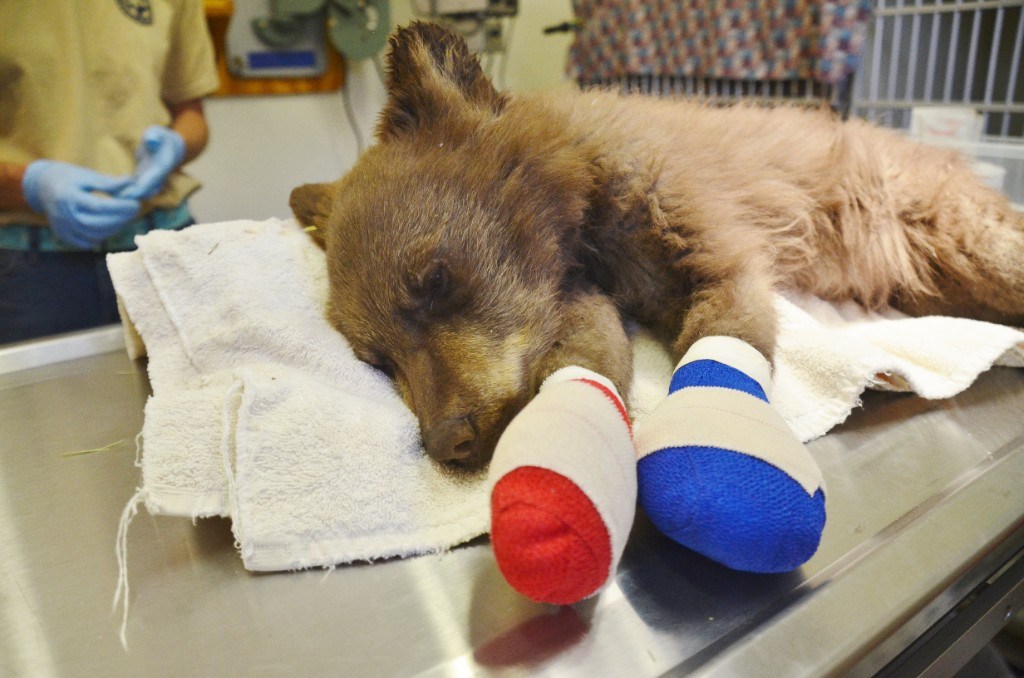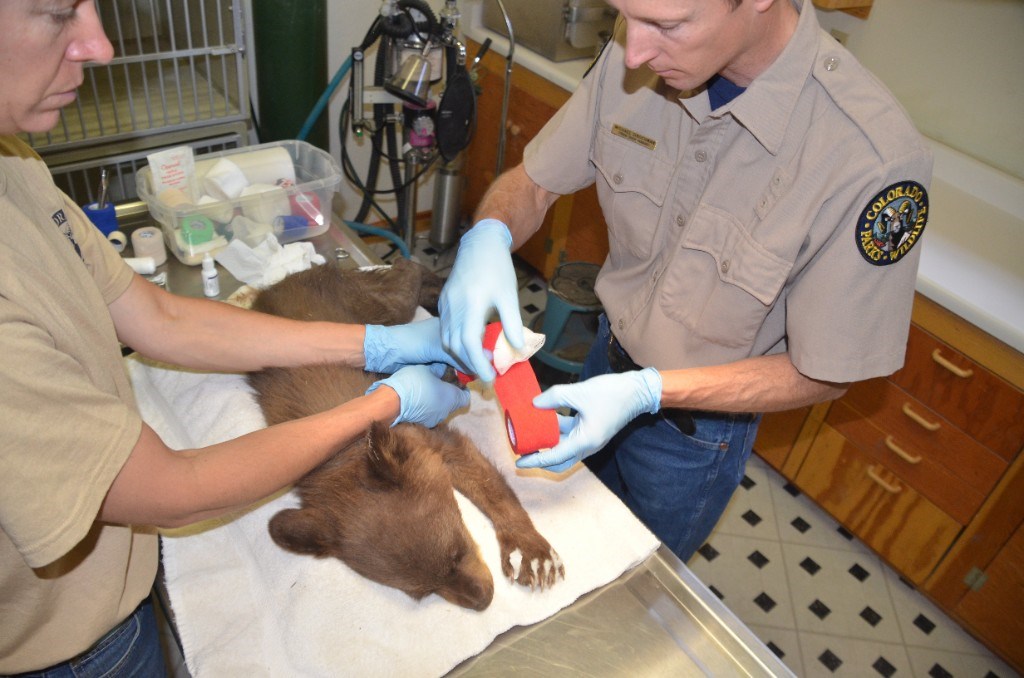Thanks to the actions of firefighters and Colorado Parks and Wildlife officers, an orphaned bear cub will now have a second shot at life in the wild, the life she was meant to live.
Firefighters and CPW officers were able to rescue the female cub from the 416 Fire burning north of Durango, but not before she suffered severe burns to her feet. The cub is now being treated at CPW’s Frisco Creek wildlife facility near Del Norte in the San Luis Valley.

“When the bear was brought in I wasn’t sure if it was going to make it,” said Michael Sirochman, manager of the Frisco Creek facility. “But she’s responding very well to treatment and by winter we believe we’ll be able to return her to the wild.”
According to CPW, firefighters working the south end of the 416 Fire noticed the cub walking alone through a burned area during the week of June 18th. When the firefighters didn’t see a mother bear for a few days, they called CPW. On June 22nd, CPW officers found the bear in a tree and immobilized it using a tranquilizer dart. Except for the burns on its feet, they said the bear appeared to be healthy.
The area wildlife manager in Durango, Matt Thorpe, made the decision to send the bear to Frisco Creek. “We weren’t optimistic at first,” Thorpe said. “It probably hadn’t eaten in a couple of days, but it had survived on its own so we wanted to give it a chance.”

Sirochman, the Frisco Creek facility manager, speculated that the bear’s mother had likely placed her in a safe spot but was unable to get back to the cub because of the fire. Sirochman said that this is a painful condition for the bear, and she has been spending most of her time lying down, keeping weight off her feet.
CPW said they have concerns about treating bears for injuries, because they could become habituated to humans. If a bear becomes habituated, they are unfit to return to the wild. Sirochman said his staff at the Frisco Creek facility have it set up so that bears have almost no contact with humans.
“We have good luck returning young bears to the wild. We’re very strict about minimizing human contact,” Sirochman said.
CPW said that no decisions have been made as to how the bear will be released, but it’s likely that after they begin to hibernate in late fall CPW officers will build a den close to the area where the bear was found. Responding to the natural hibernation cycle, the bear would likely emerge in the springs of 2020, probably by April.
CPW biologists said while some wildlife is likely injured in forest fires, research has shown that most terrestrial animals are able to flee the imminent danger. When possible, CPW responds to reports of injured animals during forest fires. Following forest fires, fish and other aquatic life that live in mountain stream are most susceptible due to the possibility of ash flows from burned hillsides.


